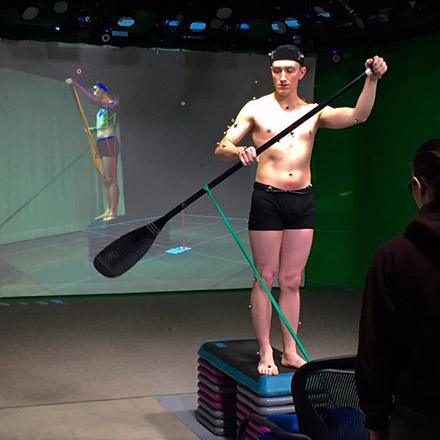Paddleboarding Study

Our fundamental research question is: do movement and muscle activation patterns differ between novice and expert stand up paddleboarders? We would hypothesize the more experienced paddleboarders are more likely to use the stronger, proximal muscles to propel them forward and to have greater changes in joint angle for the proximal (torso and shoulder) as opposed to the distal (elbow and wrist) joints. We also hypothesize that overall muscle activation, particularly co-contraction, is decreased in experienced subjects as compared to novice subjects. The results will help us understand whether training is required in order to minimize the chances of injury during paddleboarding, as well as determine what injuries are likely even in experienced paddleboarders.
Subjects recruited will be between 18 and 55 years old and will be either novice or experienced paddleboarders. The novice subjects must not have stand-up paddleboarded before, though they could have experience in other paddling sports, such as canoeing or kayaking. Whether or not they have other experience will be recorded as well. The experienced paddleboarders must have at least 50 hours experience paddleboarding and have been trained in proper paddleboard form.

We will track muscle activation and limb movement while subjects are performing paddleboard strokes under controlled conditions on a force plate in the MMAD (Motion and Media Across Disciplines) lab. These data will allow us to determine the movement patterns, the muscle activation, and the forces for subjects performing a paddleboard stroke, both on flat ground and on a balance board. We can compare these data to determine whether we see any significant differences between novice and experienced paddleboarders in terms of the pattern of muscle activation and movement patterns. These data are not being collected in a pool because the forces cannot be measured under those circumstances, and the EMG electrodes also cannot work while wet.